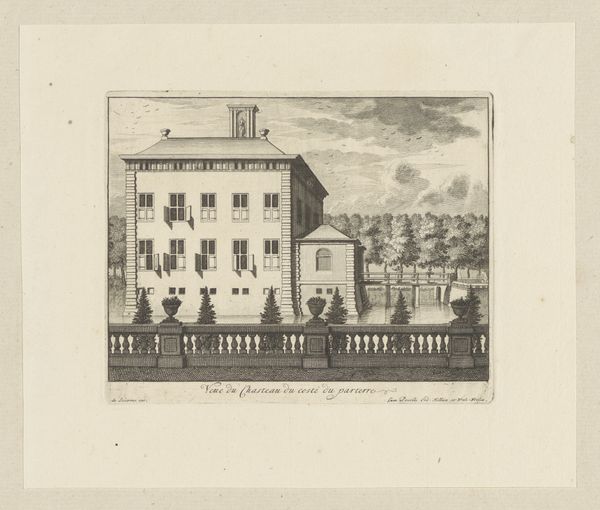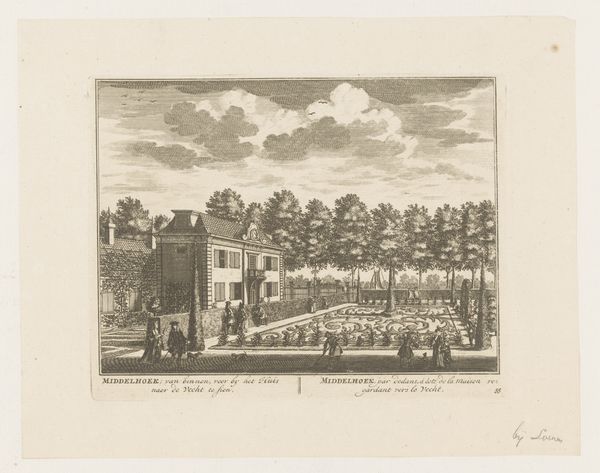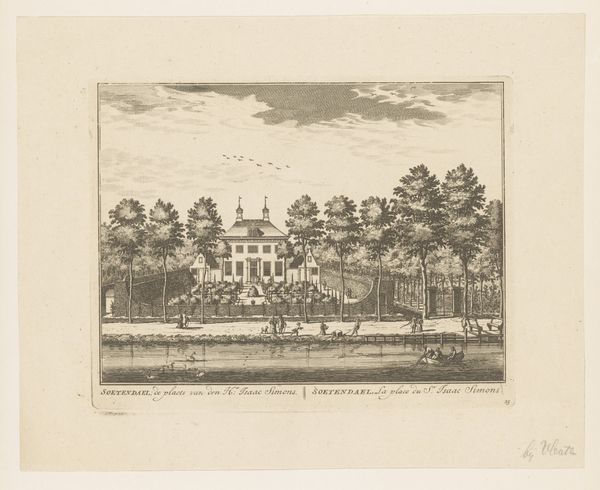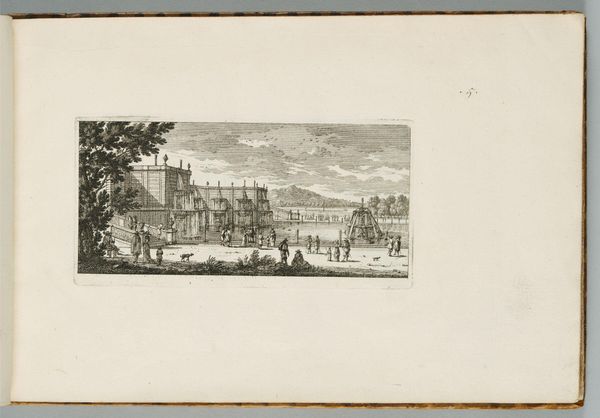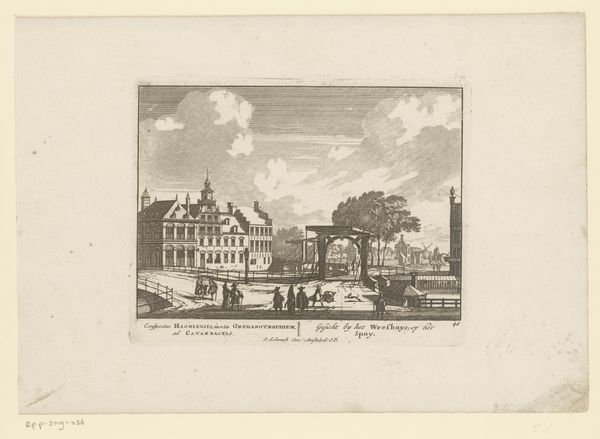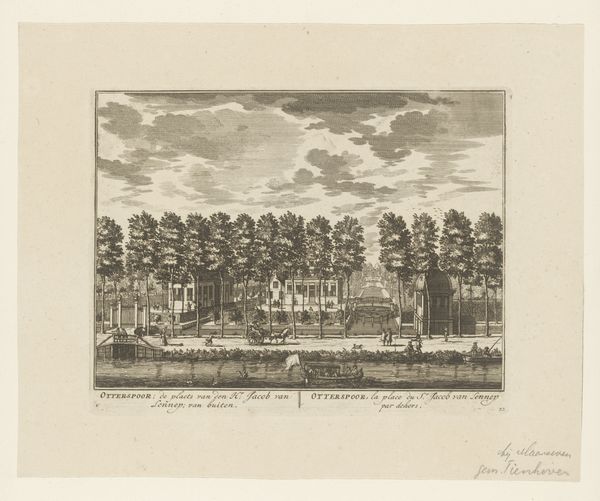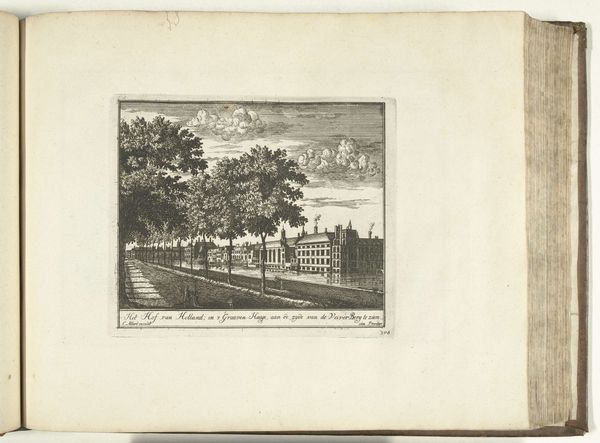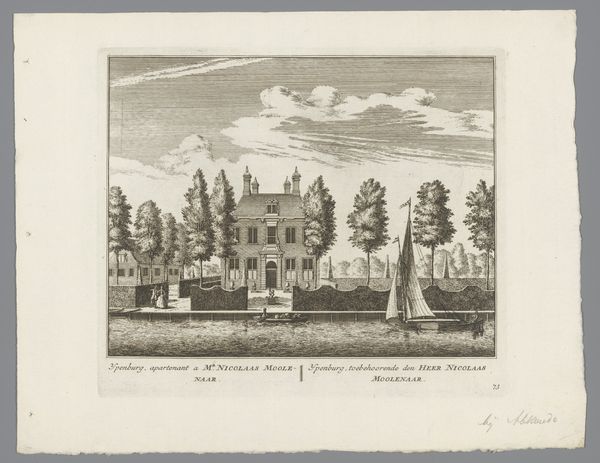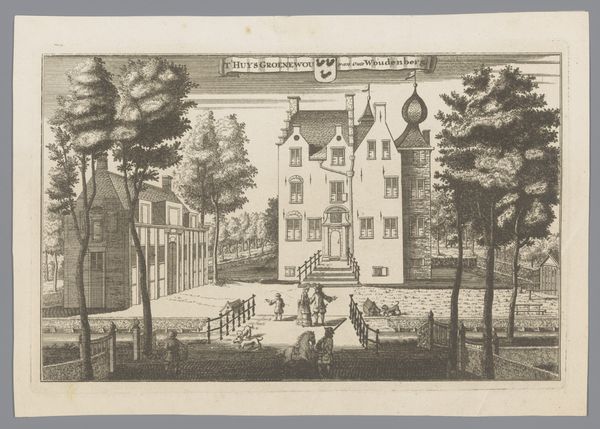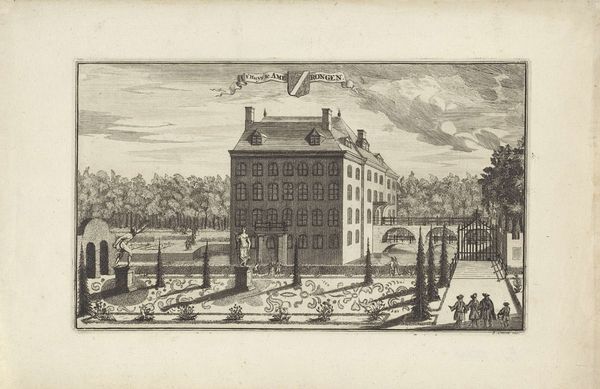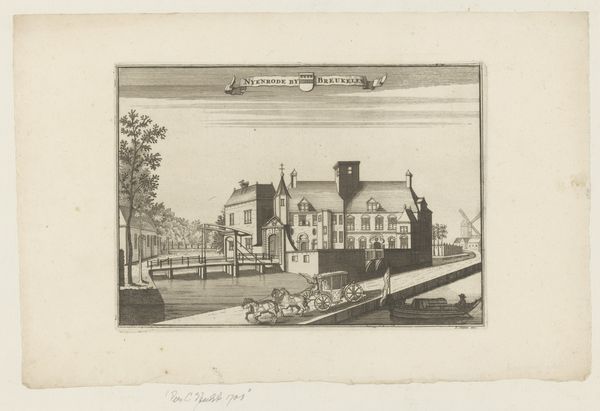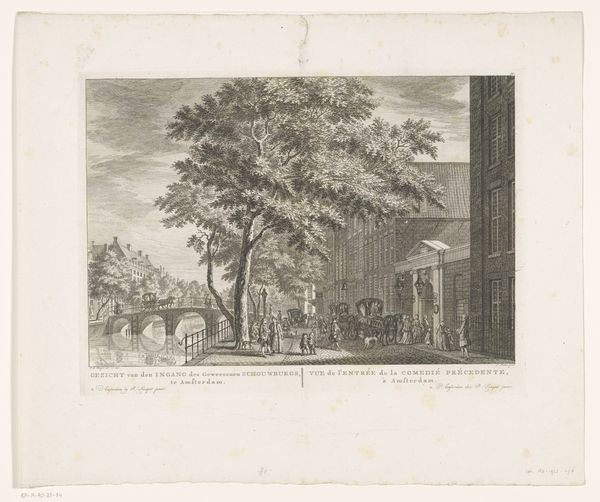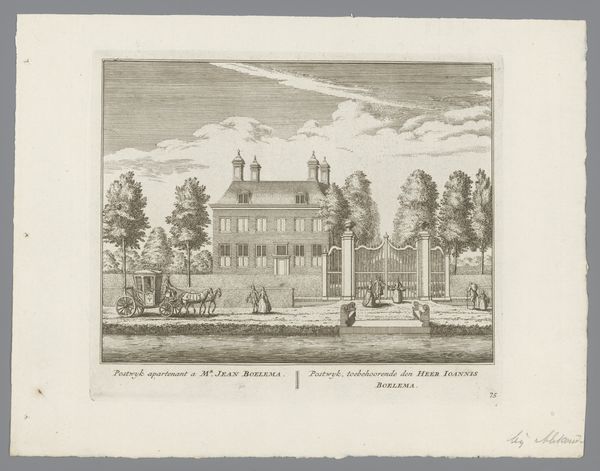
drawing, print, engraving
#
drawing
#
dutch-golden-age
# print
#
old engraving style
#
landscape
#
cityscape
#
engraving
#
realism
Dimensions: height 116 mm, width 168 mm
Copyright: Rijks Museum: Open Domain
Curator: This engaging engraving, likely dating from the late 17th century, presents a 'Landhuis met valkenier,' or Country house with falconer, attributed to Cornelis Elandts. It depicts a grand estate. Editor: It does have a rather quaint formality to it. The scene is bustling, almost staged with people milling about. Curator: From a historical point, these engravings were a prominent part of representing the wealth and progress of the Dutch Golden Age. Country estates became not only agricultural assets but symbols of power. Editor: Note the intense detail Elandts invests in the architecture and landscaping. We can discern so much about construction practices through the building style, but what kind of labour produced it? Did Elandts confront that angle? Curator: In a way, the print becomes part of that visual propaganda – an almost idealized view circulated to establish the family’s reputation. It makes me consider the role these images played in shaping public perceptions. Editor: It's important to understand who had access to these images. Engravings would be collected and exchanged as demonstrations of status. Do we know how this piece functioned in particular? Curator: As a print, this piece allowed for reproducibility and distribution. How accessible this specific one would be is not clear, but similar pieces circulated broadly, influencing ideas about wealth and property. Editor: Indeed. And seeing how printmaking enabled the construction of identity and status during the Golden Age really brings those considerations to light. The detail lavished on the house’s exterior shouts something loud about prosperity. Curator: It also tells us how landscapes and architecture were perceived and consumed during the period. We see these structures transformed into symbols reflecting societal values, power dynamics and individual aspiration. Editor: Well, thinking about it, understanding its production helps unveil that era's fascination with both craft and power and wealth’s capacity to orchestrate how that gets put on display. Curator: It's amazing how studying an image intended to impress provides so much insight into the society of the era.
Comments
No comments
Be the first to comment and join the conversation on the ultimate creative platform.
